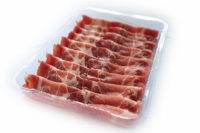Sustainable packaging conversations seem to revolve around descriptions like renewable, biodegradable and recyclable. The package is always cast as the central player. But I recently learned packaging experts in this field are taking a different view and the trend sees packaging more as having a role in a much larger drama.
“There is much less attention being given to ‘sustainable packaging’ and more attention to ‘sustainable value chains,’” explained one expert. Admittedly, this is a new take for me, but the thinking seems sound and, frankly, it has a familiar ring.
Packaging is seen now as part of a broader system for protecting, storing and delivering fresh food — its traditional role. While there is still noise in the industry about recycling and minimizing packaging, there is greater awareness about the amount of food that gets damaged or spoils before it can be consumed. Estimates place upwards of 40 percent of the food in the U.S. going uneaten and ending up in landfills as the single largest component of U.S. municipal solid waste. Packaging is more broadly accepted as a solution to the food waste crisis. The informed thinking is all about the product being packaged and less about what the packaging is made from or how it can be recovered.
That leaves bio-based materials still vying for a bona fide seat at the table with petroleum-based packaging. The seat remains vacant because, generally, the performance and price of bio-sourced materials are not in sync. Packaging is more commonly viewed as part of a bigger system, so pricing has to be looked at in terms of total cost impact. Higher price can be justified if performance is improved. Otherwise, the market for green packaging is limited to a small segment of processors receptive to green marketing claims.
For meat processors, there lies the hard reality. For the time being, they just cannot afford it even if they want it. In addition, despite consumers’ desires to recycle packaging after use, the municipal recycling infrastructure is not capable of recycling most plastics — especially flexible plastics — and food contamination is a significant issue for most recyclers. There is even much less emphasis on using the term ‘biodegradable’ given the Federal Trade Commission’s crackdown on misleading green marketing. Sharpening the processing industry’s focus on reducing food waste through a sustainable value chain seems to make more and more sense because food waste is the critical issue.
There are some bright spots for bio-based packaging, according to that same source. There is a great deal of industry effort directed towards trying to expand the infrastructure for recycling and recovering waste packaging. This means more options for curbside collection or store drop-off of packaging materials not currently accepted. In parallel, researchers are trying to simplify some of the complex packaging materials that are multi-layer or use dissimilar materials that are more difficult to recycle.
Materials research continues for new plastic materials derived from bio-sources. It will be successful to the extent those materials can compete on performance with petroleum-based materials at an acceptable price. Higher cost and lower performance must be overcome. NP





Report Abusive Comment